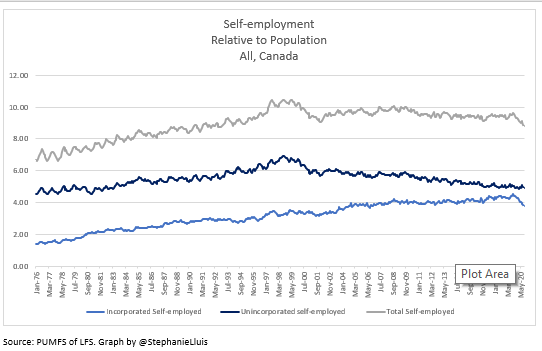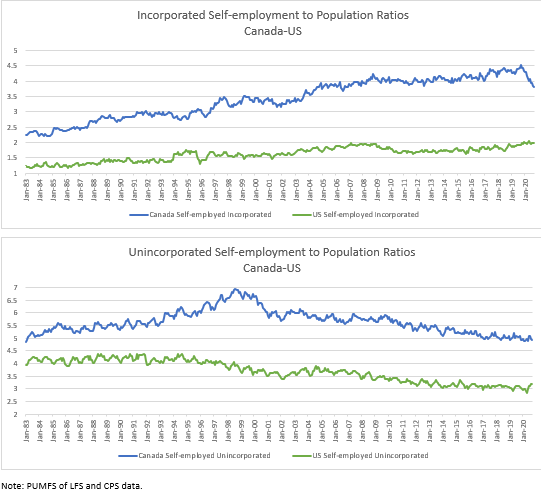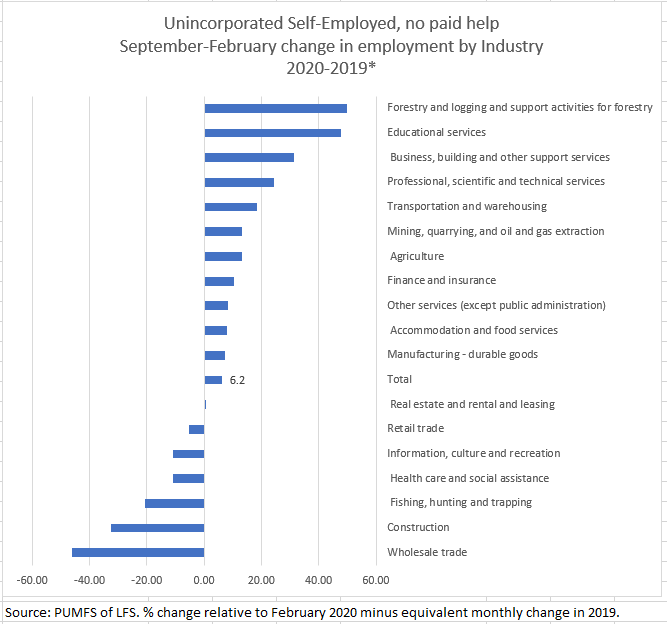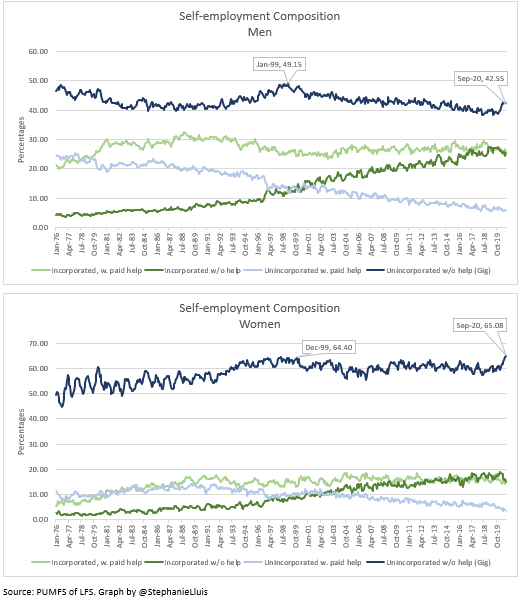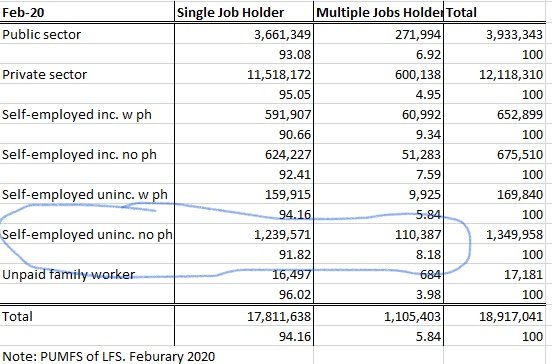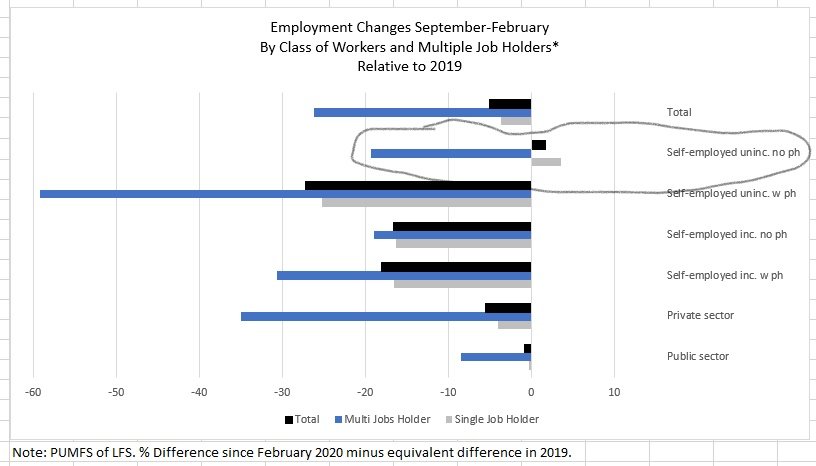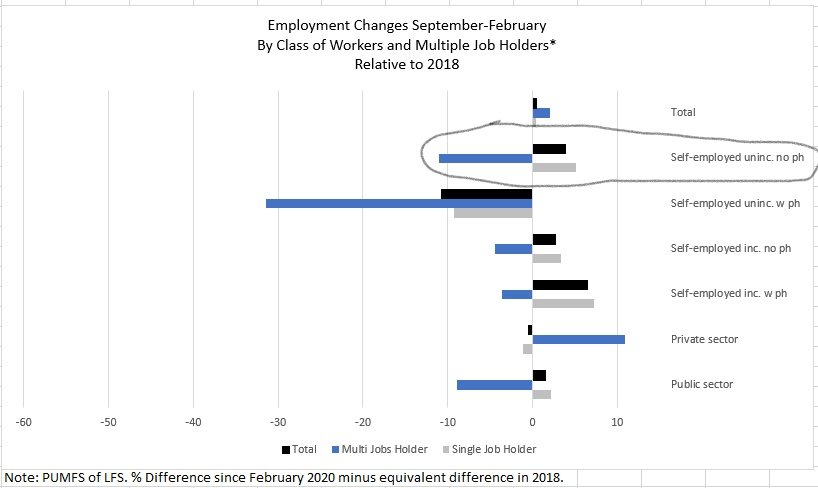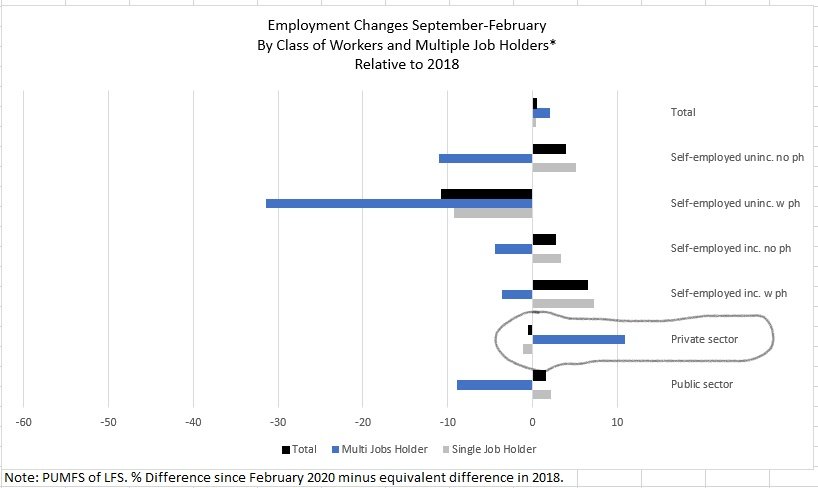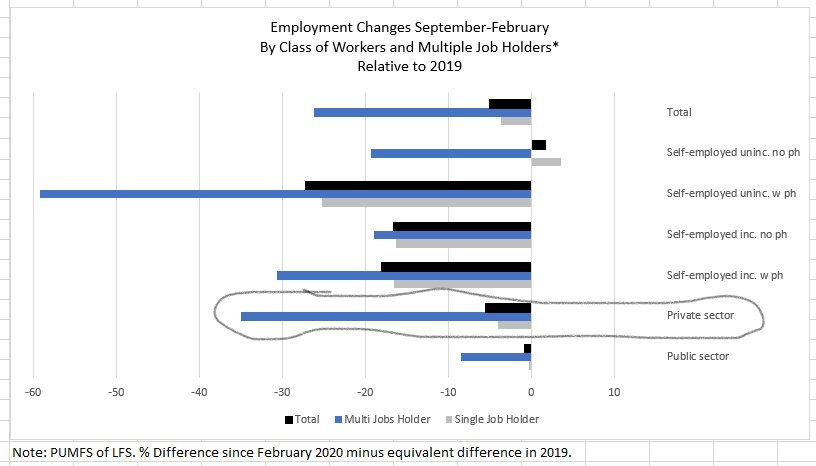Continuing my LFS updates this time on self-employment. As I had shown back in April, the distinction btw incorporated and unincorporated is key when interpreting trends. Relative to population, *incorporated* self-employment continues to drop but unincorporated remains stable1/n
This seems to be specific to Canada. Data from CPS doesn’t show similar differential patterns between the incorporated and unincorporated self-employed workers.
Here are changes in unincorporated self-employment by industry since February (noting educational services) 3/n
Regarding changes in the *composition* of self-employment over the years, the growth in unincorporated self-employment is larger for women. It& #39;s reaching levels higher than ever in the past. 4/n
A gender difference we may want to keep following closely... #cdnecon n/n
Why unincorporated self-employed experience hours reduction but employment is up? Many self-employed hold multiple jobs (pre-pandemic) so the loss in hours comes from losing the second job but we see an increase in the employment of *single* job holders (relative to 2019)
Also is the conclusion the same if we use 2018 as a reference? Yes for the unincorporated self-employed. Different conclusion for the incorporated self-employed. And now relative to 2018, private sector employment increased for multiple job holder...
So the choice of reference year matters when isolating COVID-19 impact on the private sector employment-hours because of the yearly fluctuations in multiple job holders...
I found out that multiple job issue this week when further studying the reasons for the relative increase in PT employment. Preparing a thread on that.

 Read on Twitter
Read on Twitter